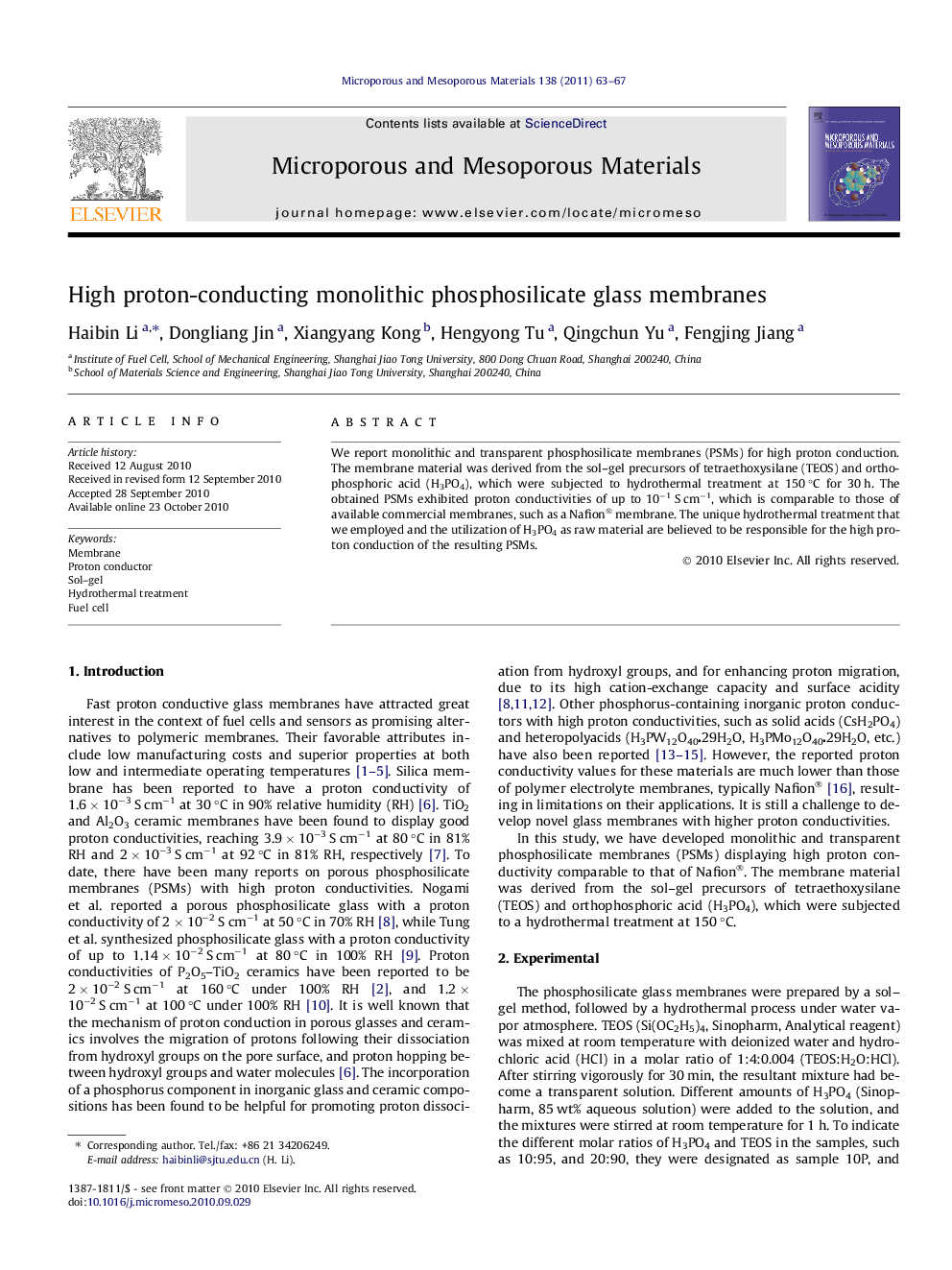| Article ID | Journal | Published Year | Pages | File Type |
|---|---|---|---|---|
| 74816 | Microporous and Mesoporous Materials | 2011 | 5 Pages |
We report monolithic and transparent phosphosilicate membranes (PSMs) for high proton conduction. The membrane material was derived from the sol–gel precursors of tetraethoxysilane (TEOS) and orthophosphoric acid (H3PO4), which were subjected to hydrothermal treatment at 150 °C for 30 h. The obtained PSMs exhibited proton conductivities of up to 10−1 S cm−1, which is comparable to those of available commercial membranes, such as a Nafion® membrane. The unique hydrothermal treatment that we employed and the utilization of H3PO4 as raw material are believed to be responsible for the high proton conduction of the resulting PSMs.
Graphical abstractFigure optionsDownload full-size imageDownload as PowerPoint slideResearch highlights► We have developed monolithic and transparent phosphosilicate membranes (PSMs) showing high proton conduction. The membrane material was derived from the sol–gel precursors of tetraethoxysilane (TEOS) and orthophosphoric acid (H3PO4), which were subjected to a hydrothermal treatment at 150 °C. ► The developed PSMs exhibit proton conductivities of ca. 10−1 S cm−1, and reach a surprisingly high proton conductivity of 0.21 S cm−1 at 90 °C under 70% relative humidity, which is about twice as high as that of a Nafion membrane. ► It is suggested that the unique hydrothermal treatment that we employed and the utilization of H3PO4 as a raw material are responsible for the high proton conduction of the obtained PSMs. ► Such phosphosilicate membranes with high proton conductivity and low cost are expected to be promising for use in fuel cells and sensors, etc.
